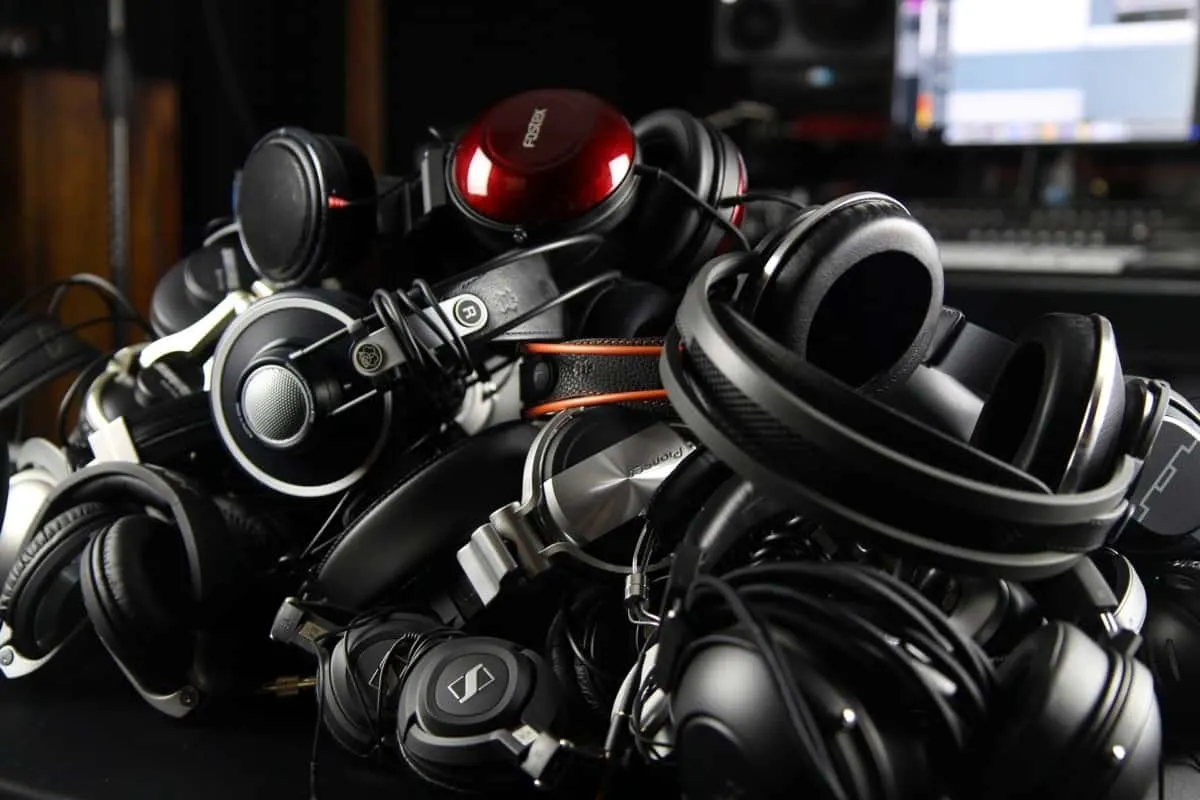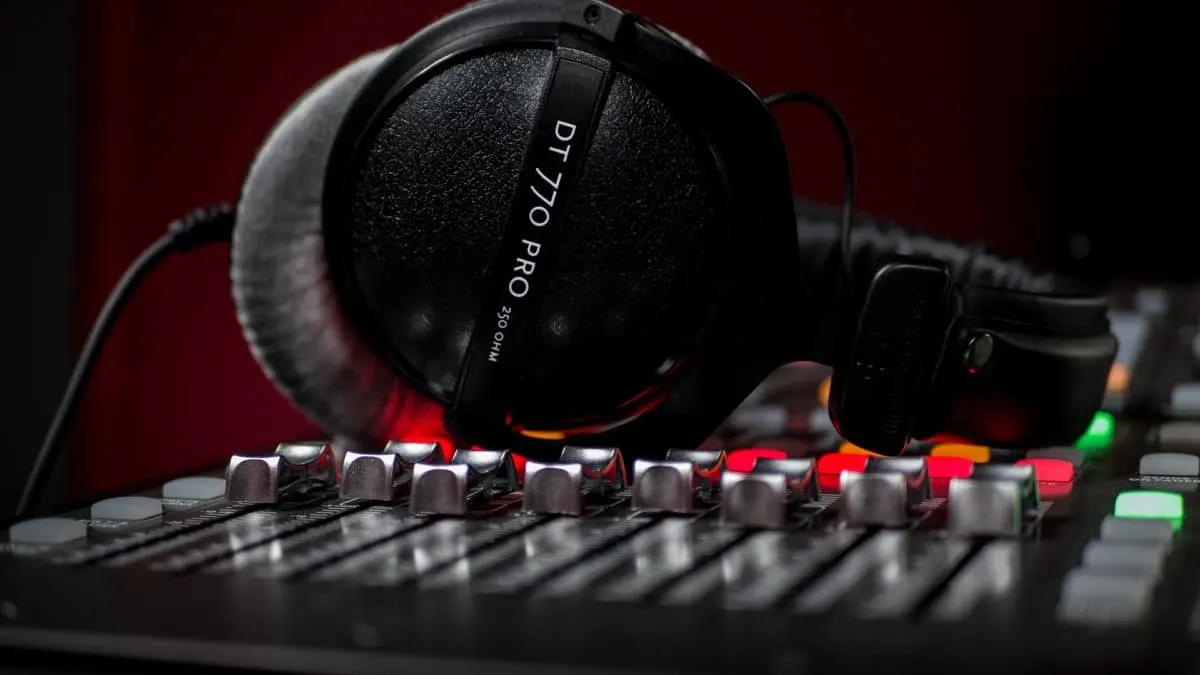When searching for the best quality headphones, there is a multitude of options available. The market is flooded with high-quality headphones, but some state they are “Hi-Fi” headphones, and others are labeled as “Studio.” Hi-Fi vs. studio headphones, what’s the difference?
Hi-Fi headphones are more dynamic than studio headphones, as they are intended for listening to a finished audio track. The flat frequency response of studio headphones does not affect the sound of the audio for the purpose of mixing studio recordings to produce a good sounding track.
If you care about your headphones and the quality of the audio that you are hearing, this is an important distinction to make. There is a big difference between Hi-Fi and studio headphones, and they both have specific purposes.
Let’s thoroughly go over the difference between studio and Hi-Fi headphones.

What Is The Difference Between Hi-Fi And Studio Headphones?
There are many differences between these two specialized types of headphones, but there are only two differences that really matter when comparing the two.
Those two differences are frequency response and equalization.
The frequency response in headphones refers to the spectrum of frequencies that the headphones are able to emit. A broader frequency spectrum means that the headphones can produce frequencies on a broader level, making for a more well-rounded tone and greater equalization options.
Equalization in a pair of headphones refers to the way the headphones are set up to play audio and which frequencies are accentuated when audio is played through the headphones.
The EQ in a set of headphones can make the difference between what is heard and what is not and can completely change the way audio sounds.
Two sets of headphones with different equalization used to listen to the same song will make the song sound very different when compared to one another.
Hi-Fi headphones usually have a frequency response of around 18Hz – 20 000Hz. This is a good frequency response, but it is not as broad as the frequency response of most studio headphones which is usually around 5Hz – 25 000Hz.
This discrepancy means that studio headphones have a broader frequency range that can be used to control the sound they emit more precisely, to create as flat a sound as possible.
These figures also tell us that Hi-Fi headphones will have more EQ applied to achieve a specific and dynamic sound from the headphones.
Hi-Fi headphones are usually set up to have more intense bass tones and more pronounced treble tones, which makes them ideal for listening to music or for enjoying other audio products, such as podcasts, or even for watching movies.
Studio headphones are equalized to be as “true” as possible, for the purposes of listening critically to studio recordings, in order to mix them well into a professional product.
What Studio Headphones Are Good For?
The critical differences between these two types of headphones are highlighted by their intended uses.
Studio headphones have their intended use in the name – they are intended for use in professional studios. This means that these headphones are required to produce as flat and true a sound as possible so that the raw recordings a professional hears are not tainted in any way by dynamic EQ.
I personally use Beyerdynamic DT990 headphones in my home studio, I “know” these headphones well and trust them to give me a “flat” response which is ideal for mixing. Check the out here on Amazon.

These headphones are used for what is also called critical listening, or monitoring, which is listening to recorded tracks very carefully, with the intention of finding any problems or undesirable sounds within the tracks, and to highlight the best sounding elements of the track.
Noticing these elements of a recording is important for a process known as mixing, which is the process of combining individual recordings into a professional, clean-sounding audio product.
Studio headphones are designed to produce the best quality audio over the broadest spectrum while not altering the way audio sounds at all, as to not produce any bias in the audio output.
Without headphones like this, it is impossible to correctly mix audio, and monitoring is impossible due to frequency biases that will skew the way audio sounds.
Check out the useful YouTube video on studio headphones.
What Hi-Fi Headphones Are Good For
Hi-Fi headphones are very different from studio headphones, not in terms of audio quality or sensitivity, but rather with regards to the listening experience.
If studio headphones are meant for creating a final audio product, Hi-Fi headphones are meant for listening to that product in its fullness.
Hi-Fi headphones are equalized with heavier bass and more prominent treble frequencies in order to accentuate or “excite” certain aspects of audio, especially when listening to music.
These headphones are dynamic, and they sound lively. They are made to bring the best out of audio and generate the most pleasing listening experience possible.
High-quality Hi-Fi headphones are very versatile. They can be used for listening to some music, watching movies, listening to podcasts, and even for clear audio during gaming or video calls.
These headphones are high-end headphones that are intended for multiple uses and to make all of those uses sound as best as possible.
I personally like the Phillips Fidelio X3 (but it’s down to personal choice) Check them out here on Amazon.
Does The Difference Really Matter?
In real-world headphone applications, the difference between these two headphone types really does matter.
Studio headphones are great for a working professional mixing tracks, but they are not the best headphones for watching a YouTube video. They make everything sound flat and can even highlight any flaws that are present in the audio.
Conversely, Hi-Fi headphones are no good in a studio because they do not produce a true representation of the audio that is played through them. However, they are great for listening to music and watching videos because they hide any discrepancies and flaws while making the interesting parts of the audio sound even better.
Hi-Fi headphones are what you want for everyday use, and studio headphones are required for studio work. It really is that simple.
I have written an article called “are expensive headphones worth it” you can read it here.
Conclusion
The main difference between Hi-Fi and studio headphones is how they make the audio sound when played through them.
Studio headphones sound flat and broad, and they have the best quality audio, but they are best suited for finding flaws in audio with the intention of making them sound better.
These headphones are for mixing and monitoring and not generally for listening to general audio such as movies and music.
Hi-Fi headphones are the headphones that are best for everyday listening. They make good music sound better and dynamic audio more exciting. They are no good in the studio due to the way they are set up, but they sound great for everything else.
Choose your headphones based on what you will be doing with them, and you will end up with the perfect set of headphones for you!
